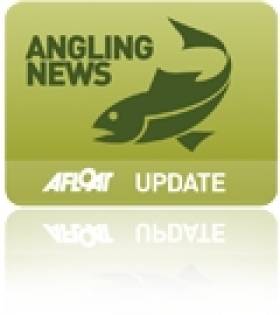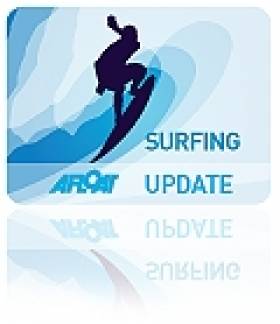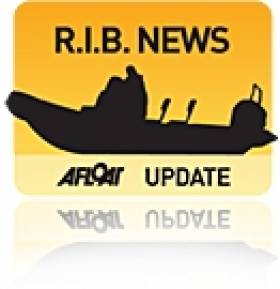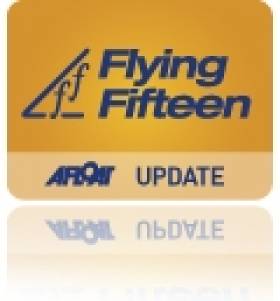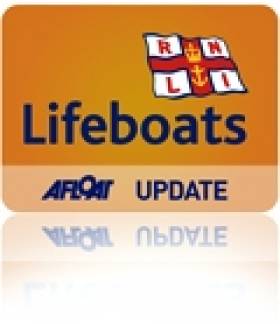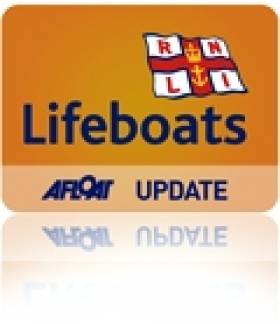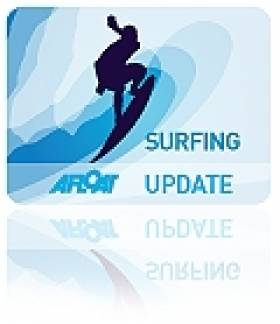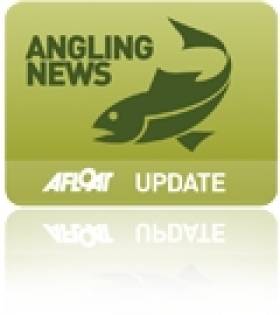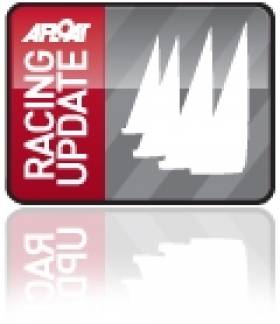Displaying items by tag: Antrim
NI Taxpayers Could Foot the Bill for Fines Over Dwindling Salmon Stocks
#ANGLING - Northern Ireland's taxpayers could be left with a bill for millions in EU fines if action isn't taken to reverse the decline of salmon stocks, the News Letter reports.
Ulster Unionist MLA Robin Swann said he believes that voluntary measures to help protect the North's Altantic salmon will not remove the threat of "fines which would likely run into millions which [the people of NI] will end up paying".
As previously reported on Afloat.ie, NI's Fisheries Minister Carál Ní Chuilín called on offshore anglers and commercial fishermen to forego applying for 2012 salmon licences.
Annual monitoring of the North's salmon rivers has shown a failure to reach targets most years since 2002, with the survival rate of salmon in the marine phases in some cases dropping to as little as 5%.
Coastal drift nets and bag nets off the north Antrim coast - which contravene EU directives - have been blamed for intercepting salmon stocks before they reach the rivers, and anglers and conservation groups have already called for a ban.
But Swann says that Department of Culture, Arts and Leisure (DCAL) does not yet have the legislative power to stop them.
The News Letter has more on the story HERE.
'World's Biggest Waves' Off Irish Coast?
#SURFING - One of Ireland's top surfers claims he has found the world's biggest waves off the coast of Ireland.
As Irish Central reports, Portrush waverider Al Mennie says that he and surfing partner Andrew Cotton have found two waves reaching as much as 120 feet in secret locations off the coasts of Antrim and Donegal.
The duo are currently waiting for the right conditions to surf the biggest swells.
"The good days are few and far between – 90 percent of the swells are unrideable and we'd reckon that only two days each year are rideable," Mennie told the Irish Independent.
Their location is being kept under wraps for now due to safety concerns, as the waves crash down in a hazardous rocky area - making them definitely not suitable for novices.
Irish Central has more on the story HERE.
Stunning New Look to McLaughlin's Red Bay 650 RIB
There's a new look to Red Bay Boats all new look 6. 5 metre RIB and by all accounts from this week's Southampton Boat Show the Irish built performance RIB is a real head turner. They could've easily be dubbed the Show boat, 'Silver shadow' or then again 'White Lady' with her stunning tubes, stianless steel work, seating and white hull.
The Stormforce 650 is one of the most innovative RIBs produced by Redbay so far. The design came from a need for a standardised RIB of around 6.5 metres that could be built quicker and lighter in the County Antrim factory.
The 650 has one of the best handling hulls in its class, and we've seen her easily out-perform larger rival RIBs in rough weather. Although the basic hull is that of the Stormforce 6.5, the 650 features a redesigned bow and sheer line.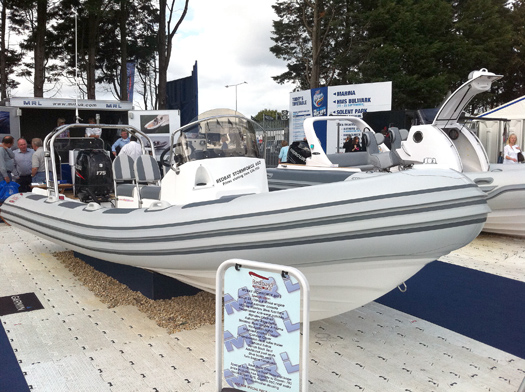
Master boat builder Tom McLaughlin was on the Southampton stand talking to Rib enthusiasts from across Ireland and the UK. The Red Bay name is now synonymous with heavy weather Ribbing and the boats have a reputation for their safety and comfort in big seas.
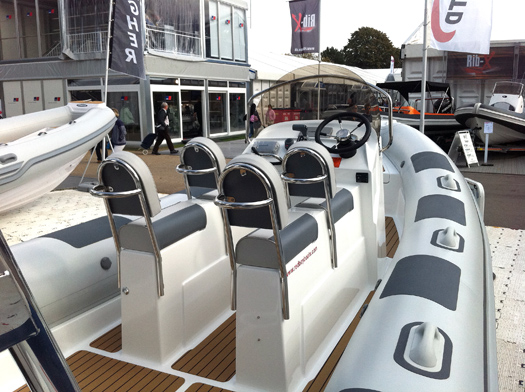
The 650 features a fully moulded internal deck. This gives a a fresh clean appearance. It also makes it easy to maintain. The 650 features a standard 4 seater side by side console and bow locker. The deck can be either finished in a quality non-slip coating or as in the case of the Show boat above with an in tek-deck.
It is fitted with a 175hp Suzuki 4-stroke outboard, 4-seater console, Garmin 750s touchscreen chartplotter, Garmin 100i DSC VHF, teak-decking, LED navigation lights.
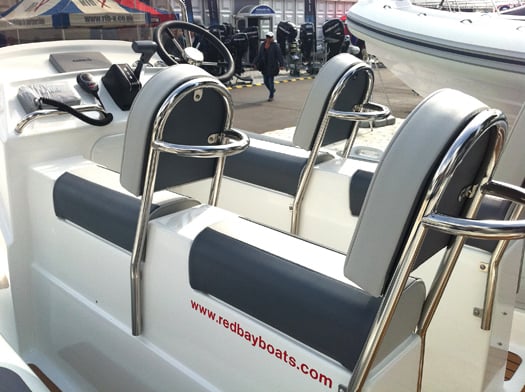
Last year's East Coast Championship in Carlingford was won by Strangford Lough Yacht Club's Buckfast, helmed by Darren Martin. Brian McKee, also from Strangford Lough Yacht Club in Killinchy, and sailing Stifflers Mom is currently ranked first in the national fleet, with only this weekend's event left to race. David Gorman aboard Hy5ive and from the National Yacht Club in Dun Laoghaire is second; while Strangford Sailing Club's Gerry Reilly on Over the Moon is ranked third. The winner of the south coast championships at Dunmore East two weeks ago, John Lavery is not competing.
The Flying Fifteen is a 20-foot keelboat that provides competitive sailing for its two-person crew. There are thriving fleets across Ireland and the UK, with approximately 50 boats regularly competing in races in Ireland. More than 4,000 flying fifteens have been built worldwide to date and a large number of these are still sailing.CSBC Commodore John Lowry said: "This is the second regional event to be hosted in Cushendall this year, following the Topper Ulster Championships in June. We're all looking forward to some great racing on the water, and great craic off it. We have six Flying Fifteens in our club, and I know that those sailors are excited by the added competition from the visiting boats this weekend. We're crossing our fingers for some good weather," he added.
Geoffrey was a scuba diving instructor and working in Thailand when the devastating 2004 tsunami struck the island of PhiPhi. He helped save many lives during that time by recovering people from the water and bringing the injured for urgent medical assistance. He also returned to the area to help bring comfort to many families who had lost loved ones by helping to get official identification for those lost in the tsunami. Sadly Geoffrey died shortly after this at the age of 32 and his parents wanted to do something to recognise the work he did in saving lives. Along with other projects they have funded this Atlantic 85 lifeboat in Geoffrey's name.
During the ceremony Roger spoke about Geoffrey and the reason they funded a lifeboat in his memory. "It is very fitting given that Geoffrey saved people from the sea that we are here today to dedicate and hand over this Atlantic 85 to the Red Bay station in Geoffrey's memory. In the same way that he saved people from the sea we are confident that those trained and skilled with this craft will carry out the same courageous acts and rescue people around these shores.
This project has given us something positive to focus on and we wish to stay in very close contact with the station. Geoffrey loved the sea and the natural environment and when we first saw this lifeboat we knew it would be like him – big, powerful, a little bit noisy and very confident. From our very first visit to Red Bay we knew that this was the place for the lifeboat to be stationed in his memory."
In another special tribute well known singer Frances Black, whose father was from Rathlin Island spoke of her love for the area and thanked the Colmers for their gift in Geoffrey's memory. Frances said, "When we were children we used to spend a lot of time up and around this area travelling back and forth on the seas around Rathlin Island. When we were young we thought it was really exciting that the waves were the size of houses but as we got older we became very aware that the seas were quite treacherous in this area, beautiful as it is.
The RNLI have saved many lives up and around this area. To save one life is a miracle but to save the amount of lives they have is fantastic. The work the volunteers do and the dedication that they have is absolutely phenomenal. I would like to say a very special thank you to both Judith and Roger. It is very important we remember the legacy that Geoffrey has left on this wonderful day. He would be so proud of his family and of what they have done today."
Frances then gave a beautiful accapella rendition of the well known song Bright Blue Rose, which she dedicated to Geoffrey.
Red Bay Lifeboat Operations Manager Alan Murphy accepted the lifeboat into the care of the station, "The lifeboat is the main piece of equipment provided by the RNLI and in many cases this is thanks to the generosity of people like Rogerand Judith Colmer, to whom we are extremely grateful. We at Red Bay are very proud of our new lifeboat and will keep the boat well maintained and always ready to launch when requested."
The lifeboat was named with a bottle of champagne poured over the side of the boat. The honour was carried out by Judith and Roger's grandson Edward.
Red Bay RNLI Station Name New Atlantic 85 Lifeboat
Red Bay RNLI lifeboat Station names its new Atlantic 85 Lifeboat the 'Geoffrey Charles' next month on Saturday, May 28th.
The busy lifeboat station was in action as recently as Sunday 17 April 2011 when RNLI lifeboat volunteers saved two men after their vessel capsized off the North Antrim Coast.
The two men were on passage from Ballycastle to Scotland in a 9 metre landing craft. Their cargo shifted resulting in the vessel capsizing throwing the two men into the water. More on that Red Bay Lifeboat rescue here.
The new lifeboat will be named at 3.30pm at the lifeboat station and there will be celebrations afterwards at Cushendall Sailing and Boating Club.
Related Safety posts
RNLI Lifeboats in Ireland
Safety News
Rescue News from RNLI Lifeboats in Ireland
Coast Guard News from Ireland
Water Safety News from Ireland
Marine Casualty Investigation Board News
Marine Warnings
Surfing Monsters at the Giant Causeway - The Finn McCool Story
Our week began with the forecast of a huge swell hitting the North Coast of Ireland. It is usual that we travel through the night to meet the swell somewhere on the West Coast with great anticipation writes Conn Osborne. This time there was none of that, this time the swell was coming to meet us in our own backyard.
There had always been rumours of a wave, rumours as mythical as the tales of the Giants themselves at the Causeway. (SCROLL DOWN FOR PHOTOS!)
Al Mennie has been surfing most of his life, and big wave surfing for alot of that. Years ago he began a survey of our coast searching for potential big wave spots, educating himself through much observation and study on what exact conditions were required for each indivdual location.
The exact conditions this time were culminating on one of Ireland's most famous landmarks and tourist attractions, we felt privileged and knew that performing our best was the only option.
Monday drew to a close with phone calls between us gradually slowing down and firm plans having been shaped and finalised by Al who stood alone on the Causeway in the dark watching...and waiting...
Tuesday finally arrived, we each set out alone before dawn, with an aim to meet at first light - plenty of time then to organise equipment and get the tide right.
We have done this so many times before and have seen so many big waves but it was certainly different and very inspiring to view our own waters through refreshed eyes.
Equpiment was organised, set up and checked, the chosen boards were ritually waxed and choice of fins installed. The Riders, Al Mennie, Andrew Cotton, and Lyndon Wake protected from the bitterness by high tech wetsuits set down the slipway with their Jetski and "Sled" rigs into the icey waters of the Atlantic.
As we made our way over the the chop and over the swell we could see some white water entering the arena which is a bay that we knew would fill with white water and leave no safe exit from riding the large waves. (This was a spot that would prove to take all of our surfing knowledge and experience to surf.) We sat and prepaired with good grace 'n banter as we waited for those anticipated conditions to combine.
We could see spray fly off the back of swell as it rolled into the bay. The wind was picking up right.
Jetskis were powered up and we went in for a closer look to study how the wave was actually shaping up - the dynamics.
Swell increased in size and we could now really see the true challange of what we had set out to meet, for up until this moment, no one had witnessed swell of this size in position to surf.
Al Mennie Talks about his first experience..
"After watching the sets break and establishing some mark ups so we knew where we needed to sit in order to catch them, both Cotty and I jumped in and paddled to the peak. Every now and again the bay would close out with a set that would miss the main take off spot".
"Within 30 seconds, of paddling out, I got lucky and happened to be right under a big peak coming towards me. As I spun my 8'2" around to paddle into it I almost couldn't belive this was happening. Last week I was in La Vaca surfing in the contest and the week before I was surfing big La Santa point with Rob Small. Now, I'm paddling for a wave, just as big, two minutes from my house. I remember getting to my feet as it stood up and then going really fast down the face. As I kicked out I looked around me in disbelief. This big wave is breaking in one of the most beautiful natural arenas in the world and I've just ridden one. It was very satisfying. As I paddled back out for what became a four hour session Cotty went on his first elevator drop."
"The bay is very deep and holds a lot of water causing quite a lot of movement out there. There are rock boils everywhere and it would be very easy to fall and become a human pinball!"
Al Mennie's exploits, expeditions and endeavours can be read about in his book... Surfing Mennie Waves. Available online at www.almennie.com

Irish Big Wave Rider Al Mennie going over the Edge @ Finn MacCools - Giants Causeway
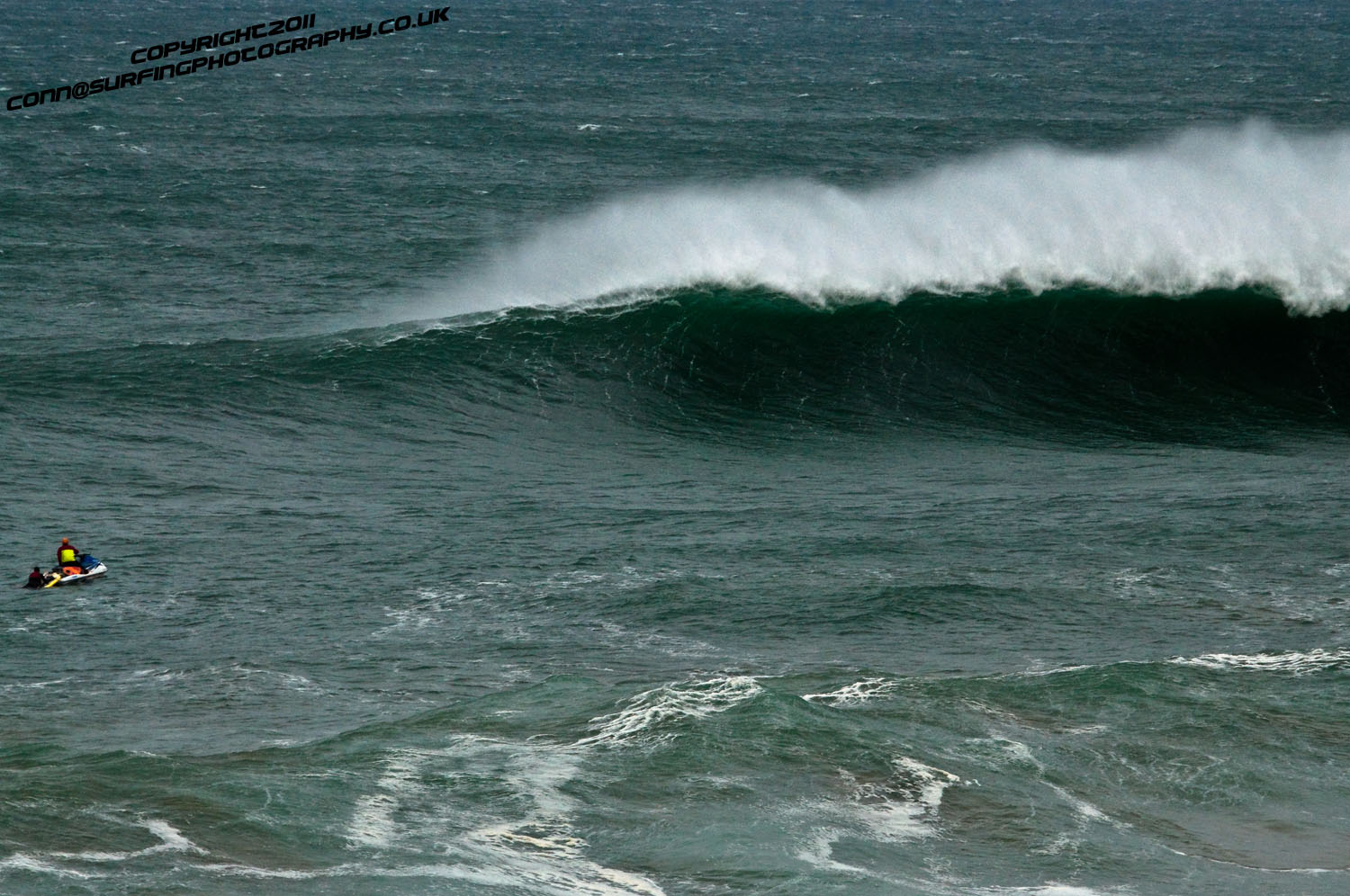
The Team sit studying before commiting (Scale Setting)

Early in the day before the real conditions meet, this is the wind starting to Rise
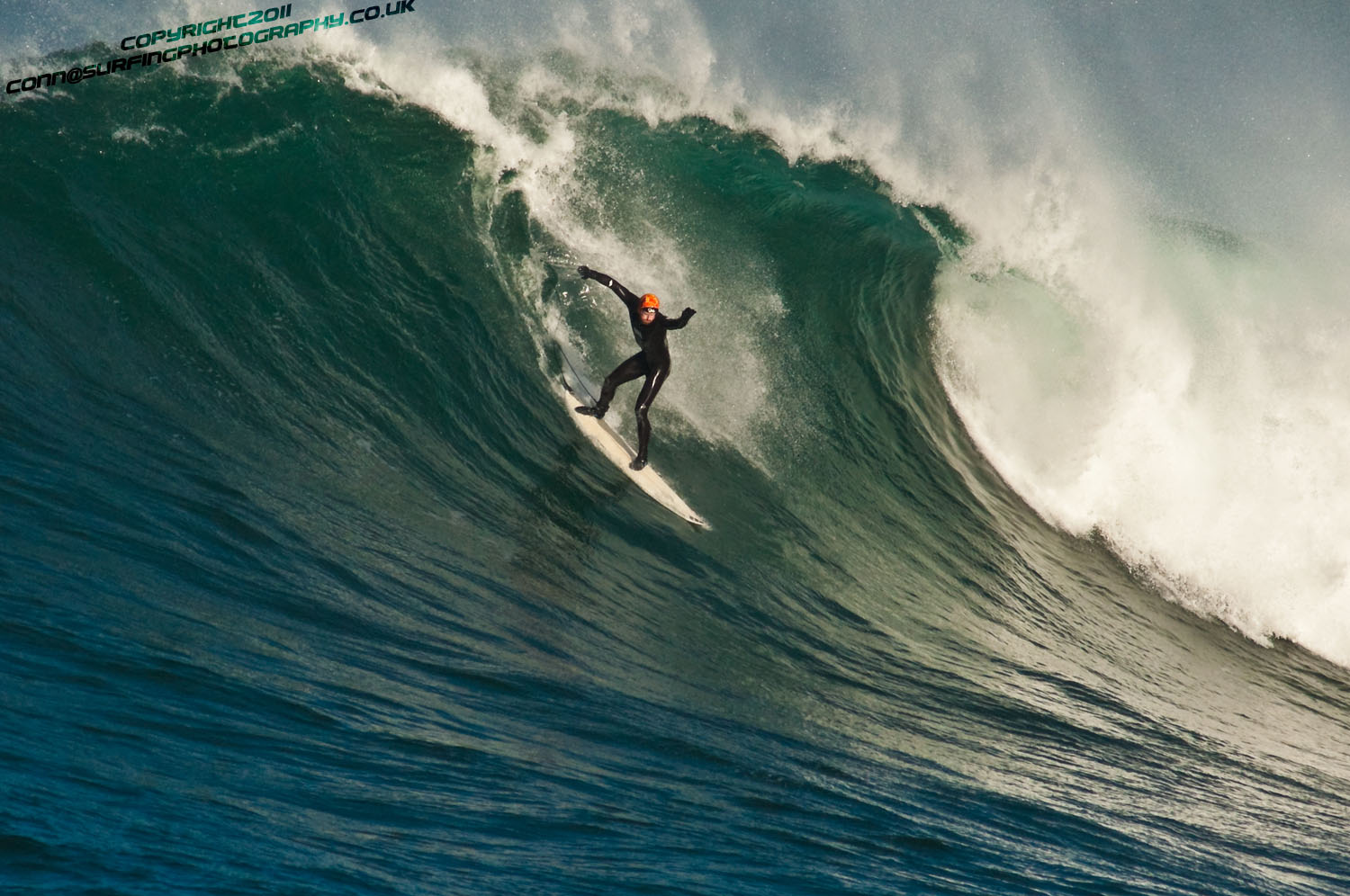
Al Mennie, Ireland's Big Wave Rider "Taking the Drop" and experiencing weightlessness

Al Mennie having a fun Tow In, the guys prefer to paddle into waves under their own steam, "Any wave worth surfing, is definitely worth earning"
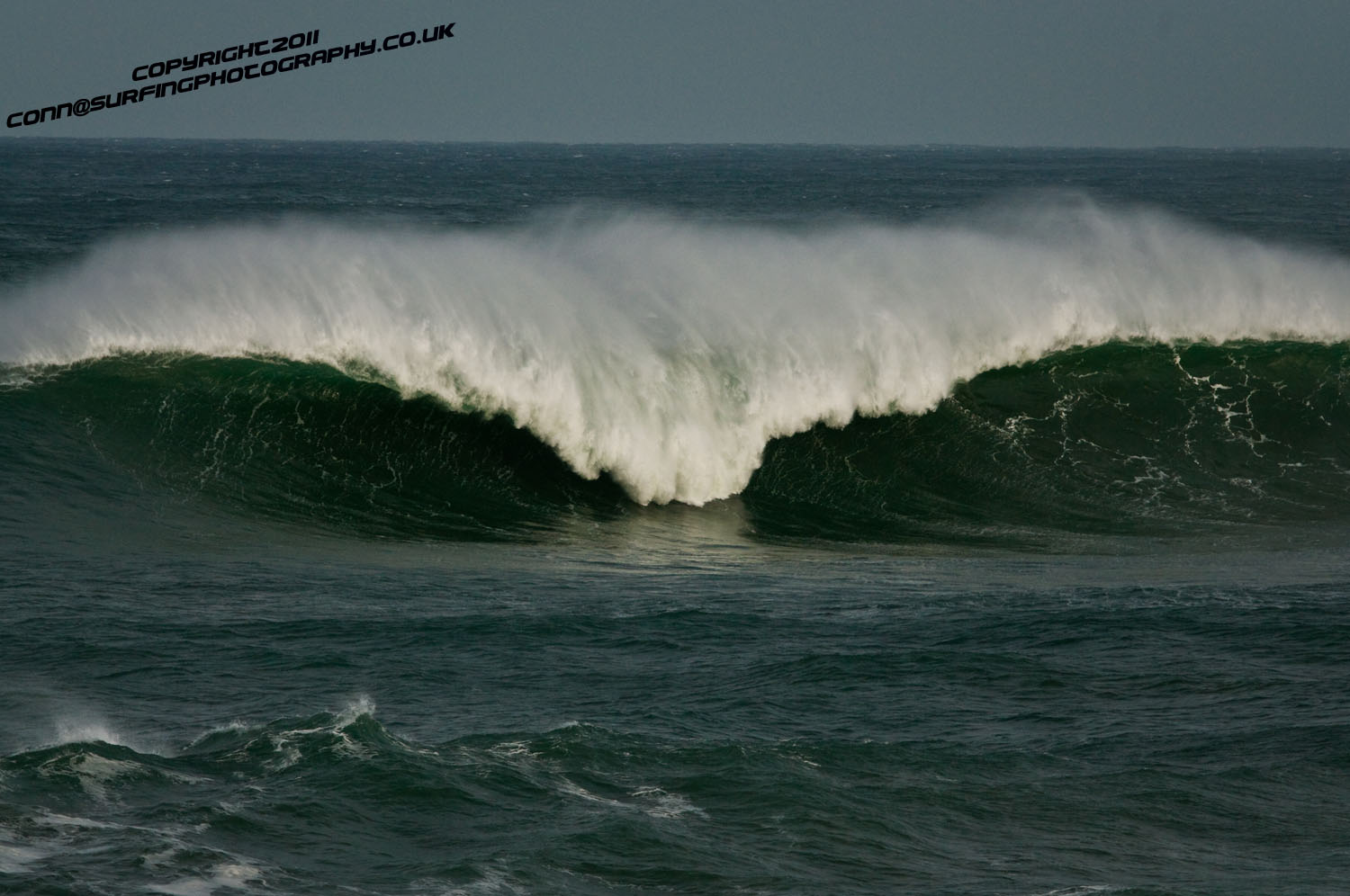
Favourable conditions.. This is what Finn MacCools looks like
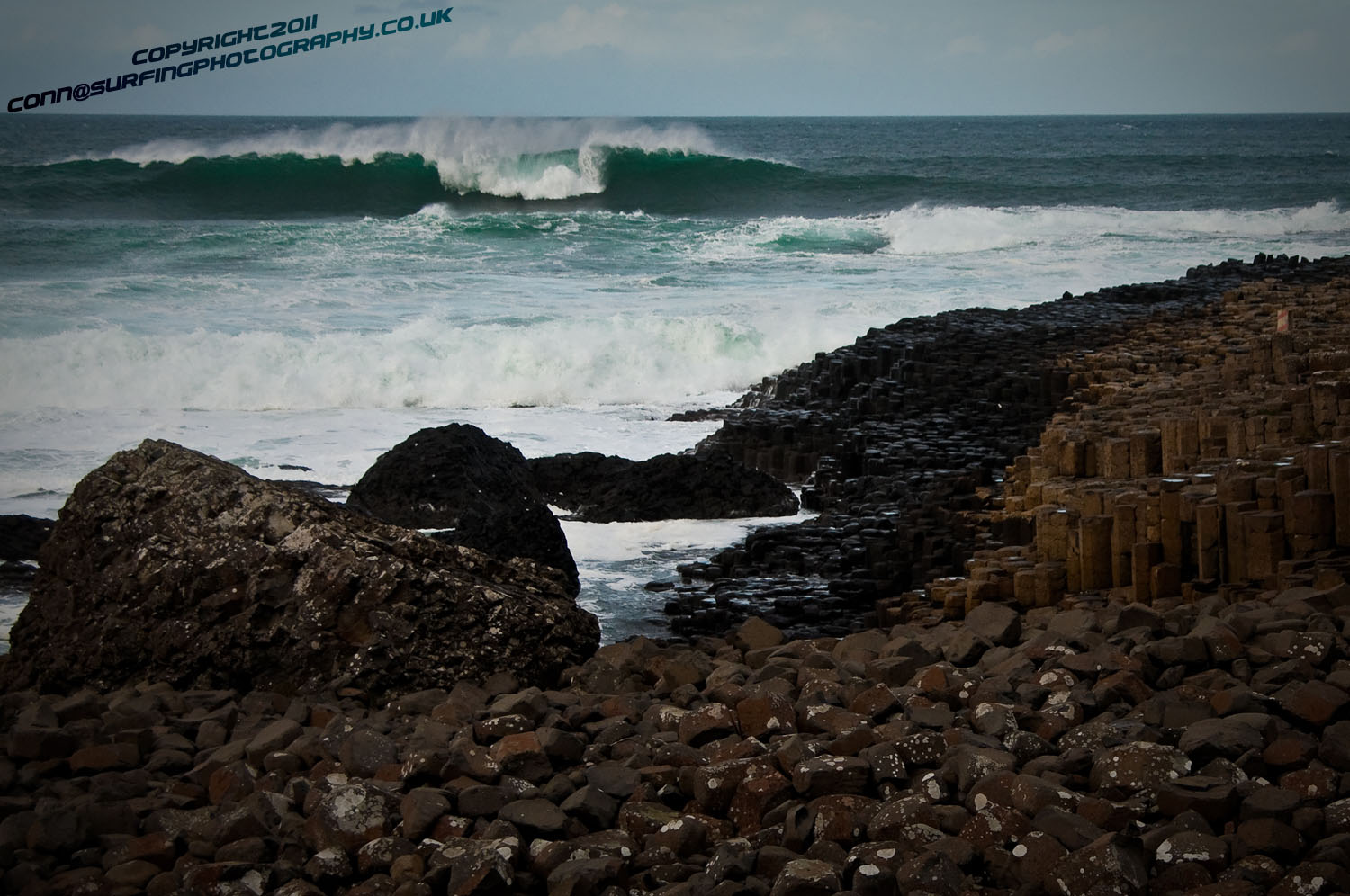
The Giant's Causeway before the real Big swell hits
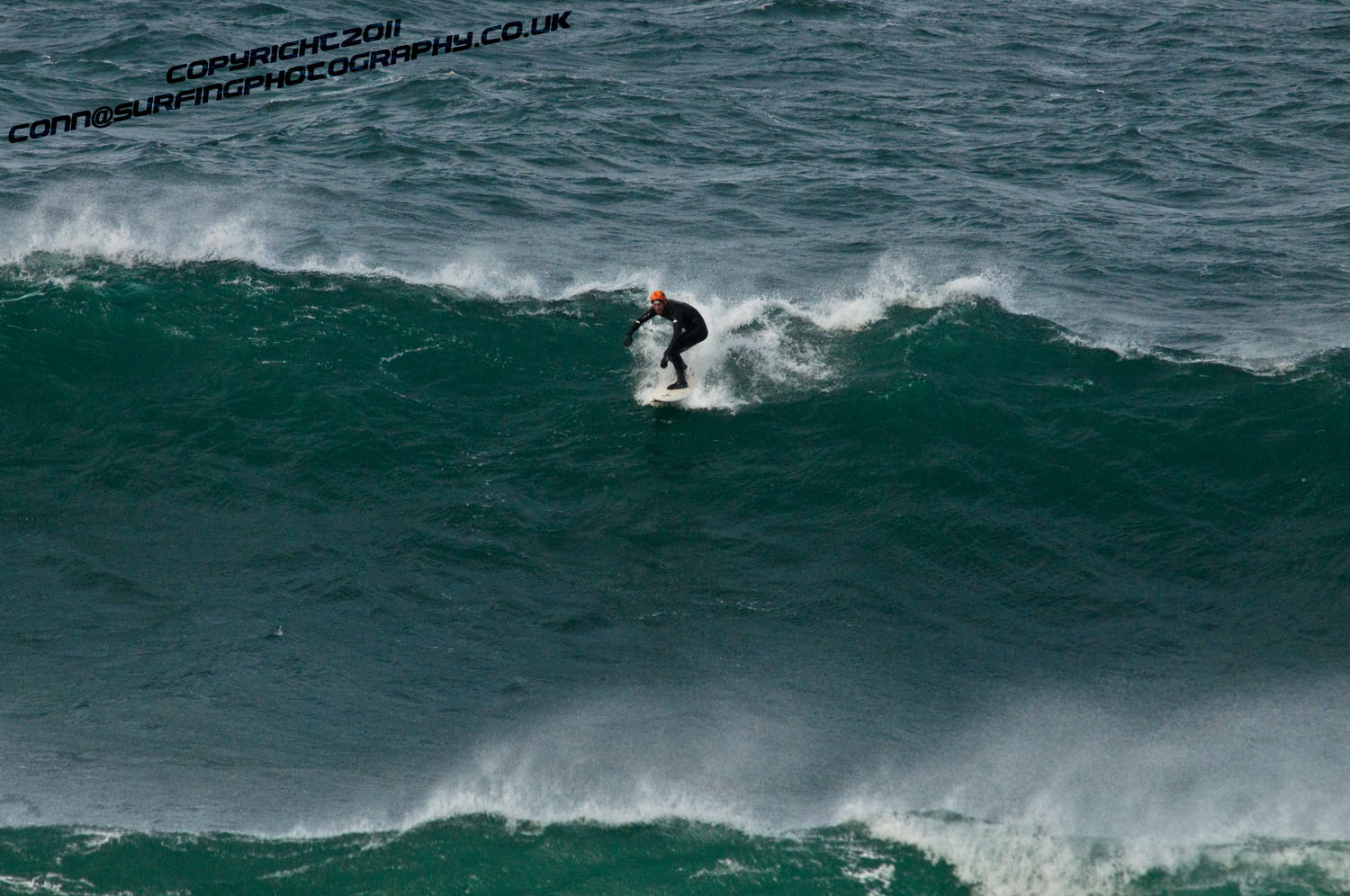
Al Mennie gets to his feet and anticipates the next 20 seconds
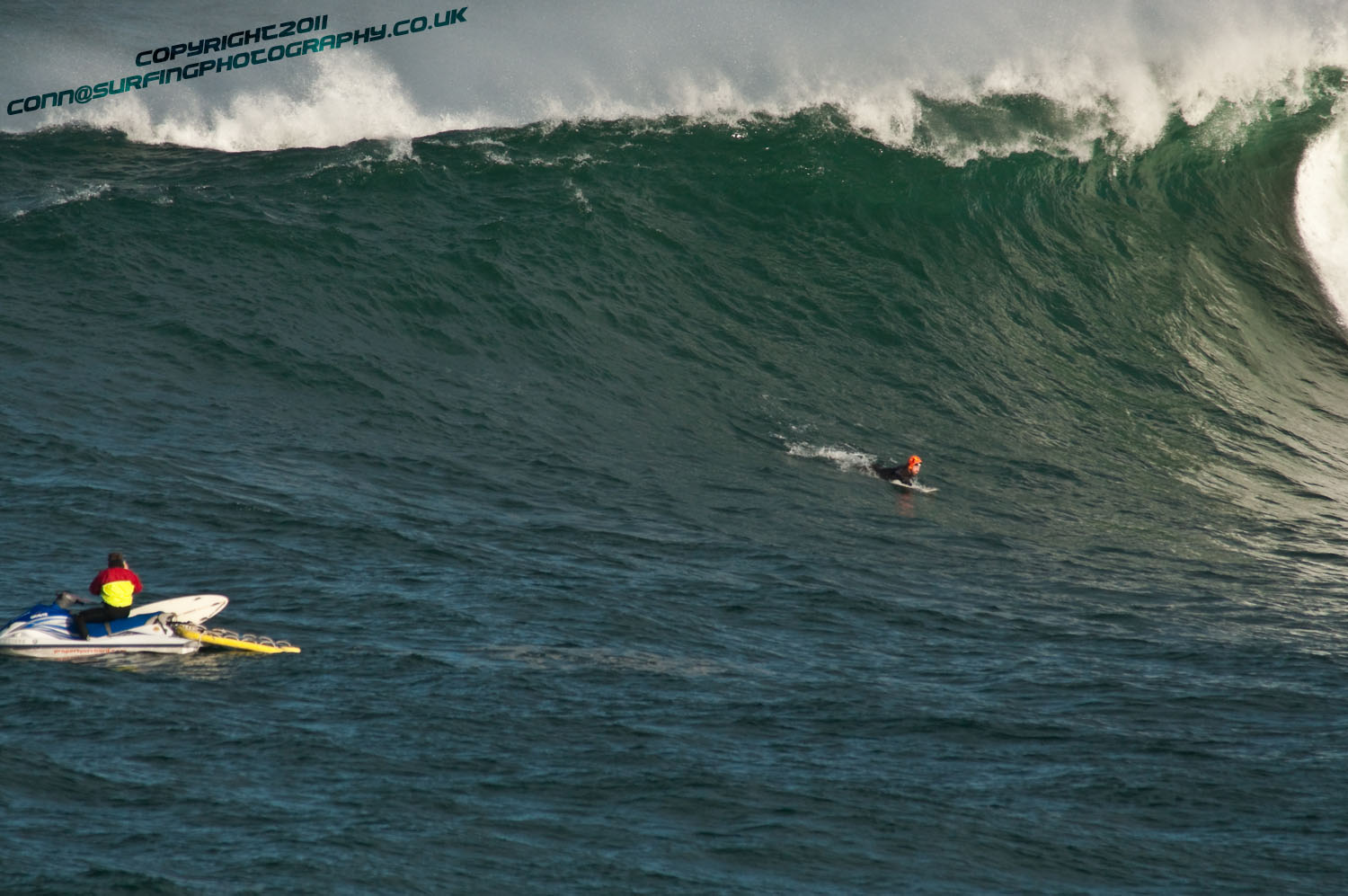
This is Al Mennie paddling to get up to speed so he can catch the Giant that is about to rare up to him
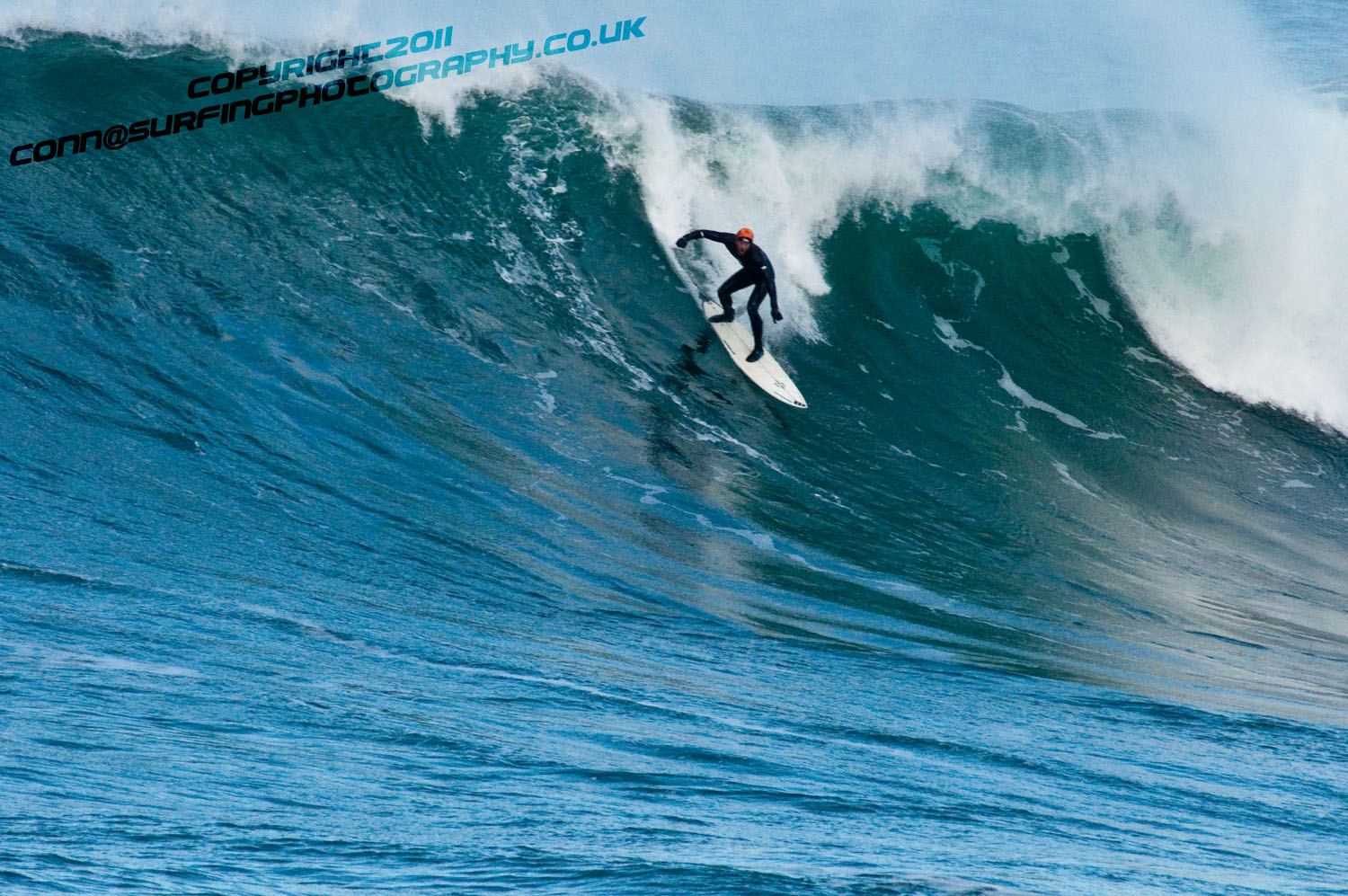
Al sets the Rail of the board as he makes the high speed descent down the face of this fast moving Giant

Irish Big Wave Rider, and Devonshire Big Wave Rider Andrew Cotton go over their equipment.. "to be able to actually put yourself in these potentialy dangerous situations and get out of them not only requires reliance on others, but also equipment"

Andrew Cotton makes it to the bottom of a Finn MacCool wave ready to turn in towards it and climb
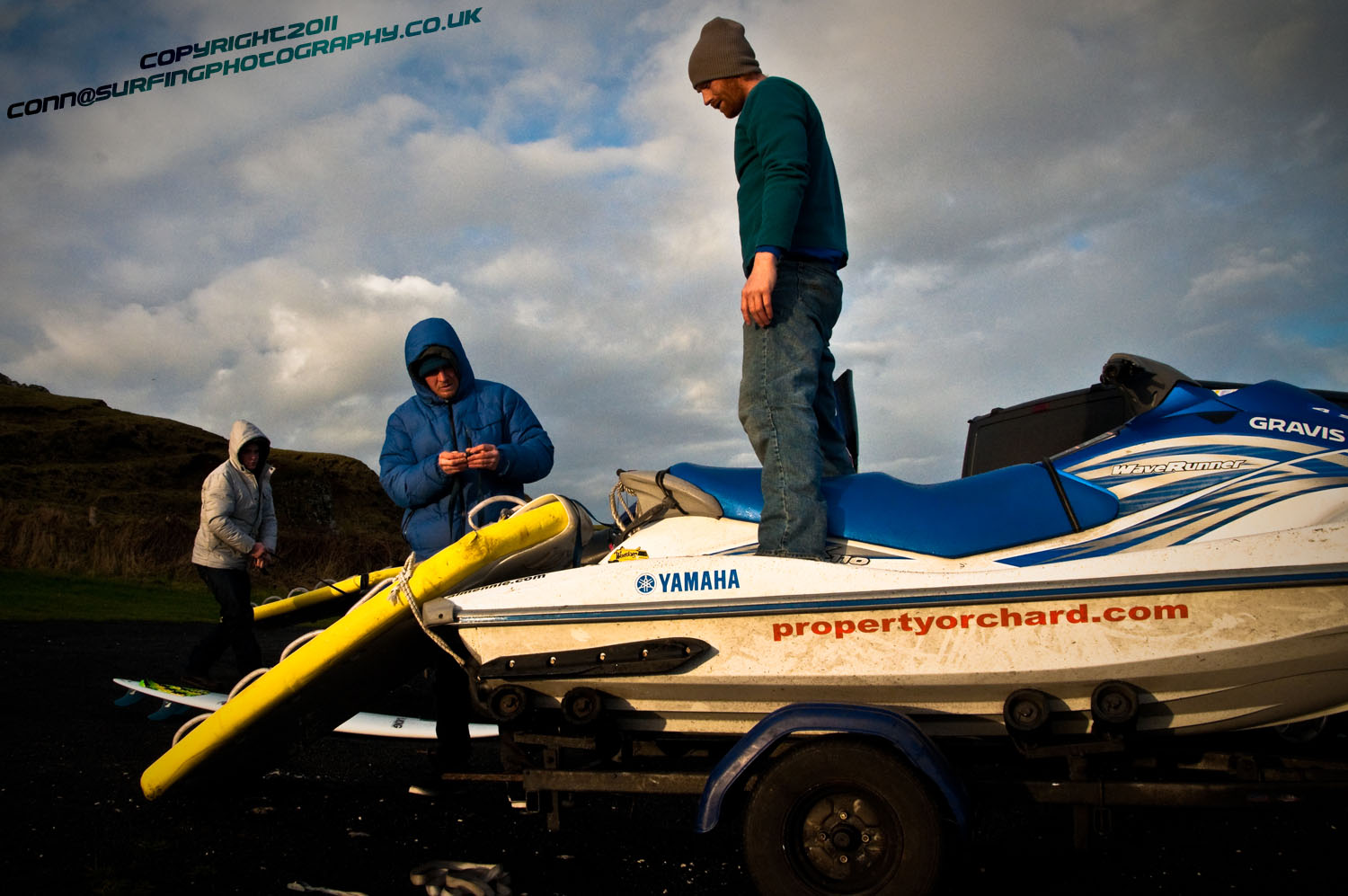
Young Devon Pro Surfer Lyndon Wake, Andrew Cotton, and Al Mennie attach their "Sleds" to their high powered jet skis, these enable a platform for a surfer in the water to swim, and hold onto so they can be evacuated from a hazardous situation in the least possible time

Early morning at the Harbour .. North Antrim.. Cold and deserted

Al Mennie and Lyndon Waxing their boards for traction

Andrew Cotton takes the drop at Finn MacCools and tries to force the nose of the board down against the wind that howls up the face of such sized waves

6ft 5' Al Mennie walks down the Causeway into the sea ready to paddle out and catch a giant
More from Conn Osborne on his website HERE
New Passenger-Only Ferry for Northern Ireland-Scotland Route
Plans to operate the first passenger-only ferry service between Northern Ireland and Scotland are scheduled to start in late May, writes Jehan Ashmore.
Kintyre Express is to operate a Ballycastle-Campbeltown service on Fridays, Saturdays and Sundays between 27 May and 26 September. Three daily return trips are scheduled on the service though the 1200hrs sailing from Campeltown and the corresponding 1400hrs sailing from Ballycastle will only operate on customer demand.
The passage time is scheduled to take approximately 1 hour 30 minutes between County Antrim and the Mull of Kintyre which is a distance of some 50 kilometres / 30-miles. Ticket fares for a single journey are £30 and the return is £55. On the remaining days that the route is not operated on, the boat is available for private charter.
In addition the new venture is to include an on-demand Campbeltown-Troon route running between April and September. This second service, linking Argyll with Ayrshire, will operate on Sundays, Wednesdays and Fridays. The journey time is somewhat shorter with a scheduled time of 1 hour 15 minutes. The on-demand service must be booked in advance with singles fares costing £50 and a return ticket at £80. For further information click www.kintyreexpress.com
Like the recent proposals announced for a passenger-only ferry service across Galway Bay click here, the Kintyre Express operation will also use a fast-ferry in the form of rigid inflatable boats (RIB). The two routes from Campeltown will be served by Redbay Stormforce 11 metre RIBS which have centrally heated fully enclosed cabins for about 10 passengers. The Redbay Boats are built in Cushendall, Co. Antrim, for further information about the type of RIB to be used on the new routes click here.
The Ballycastle-Campbeltown route will be unique in that it will be the sole passenger-only ferry operator serving between the island of Ireland and the UK.
When the second route opens between Campbeltown-Troon, the company will be able to provide their boat service linked in with a train journey to Glasgow which they claim can be completed in less than two hours. Trains between Troon and Glasgow Central Station operate every 30 minutes and with a journey time of approximately 40 minutes.
For those who are car-free and time-free, this most northerly of travel routes is arguably the most scenic way to travel between Northern Ireland and Scotland and will appeal also to the intrepid traveler.
On both ferry services bicycles are carried for free and currently there is a special offer with all ferry tickets that can also be used for a free-day pass on the local Kintyre bus network for up to 24-hours. The bus operator is Craig of Campbeltown which trades as West Coast Motors and which owns Kintyre Express. The bus operator also serves on routes throughout Argyll and the island of Bute.
The next nearest cross-channel operator to the Kintyre Express Ballycastle-Campbeltown service is the car-carrying catamaran fast-ferry seasonal service between Larne and Troon operated by P&O (Irish Sea). The same company operates the year-round conventional car-ferry service on the North Channel between Larne and Cairnryan. Also operating to Loch Ryan is Stena Line which operates both ferry and HSS fast-craft services on the Belfast-Stranraer route.
Over the years there have been several attempts to revive the ferry between Ballycastle and Campeltown following a service that catered for vehicles too. For three summer seasons starting in 1997 the service was operated by the Argyll and Antrim Steam Packet Company, using the Claymore (1978/1,632grt) which could accommodate 500 passengers and 50 vehicles.
In 1996 the vessel was chartered to carry out tender duties for visitors and crew of the aircraft-carrier USS John F. Kennedy (displacement 82,655 tons full load) which was at anchor off Dun Laoghaire Harbour.
Cold Weather Threat to Fish in NI
The recent cold snap has posed a serious threat to Northern Ireland's fish.
The Belfast Telegraph reports that thousands of salmon froze to death at a fish farm in Co Antrim last week as temperatures dropped well below zero.
Staff at the British government research centre in Bushmills have battled against the elements to protect their fish stocks, as rivers and canals throughout the country have frozen over into virtual ice rinks.
Centre manager Martin McAleese told BBC Radio Ulster: "Unless you keep the water running in the tanks overnight, they'll run out of oxygen. The fish suffocate."
The full extent of last week's extreme cold on inland waters is not yet known, but it is feared that angling in the area could be affected.
Greystones Sailors Lead RS400s in Cushendall
There were 23 high performance boats starting today's races – 16 in the RS 400 class and seven RS 200s. Of the fleet, large numbers travelled from Greystones (Co Wicklow) and Royal North (Cultra), with boats also coming from the National Yacht Club (Dún Laoghaire), Strangford Lough and Ballyholme. Six local Cushendall boats also started.
The fast, light-weight sailing dinghies have a crew of two.


























